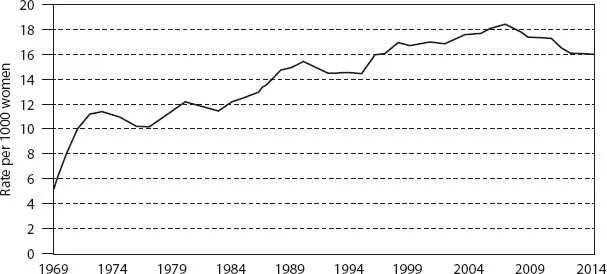
Contraception Made Easy, revised edition
Laura Percy, Diana Mansour
- 170 páginas
- English
- ePUB (apto para móviles)
- Disponible en iOS y Android
Contraception Made Easy, revised edition
Laura Percy, Diana Mansour
Información del libro
Highly Commended in the 2016 BMA Medical Book Awards!
From reviews:
"…undoubtedlythe best feature is the user-friendly and consistent nature of the format. Eachmethod of contraception has a dedicated chapter with an identical outlineshowcasing factual and practical content using bulleted text, tables andpictograms…. The book would be useful for medical students that are 'new' tothe subject as the outline of the chapters lends itself to seamless grasping ofnew information. However, the practical application of the factual informationis ideal for both gynaecological and family planning trainees, nurses that workwithin the field and general practitioners." Ulster Medical Journal 2016:85(3):211
This revised edition has been updated to include the 2016 UK MedicalEligibility Criteria for contraceptive use, as well as other updates. It helpshealthcare professionals to provide up to date and practical guidance on allthe commonly used contraceptive methods:
-
combined oral contraceptive (COCs), patches, andvaginal rings
-
progestogen-only pills (POPs), progestogen-onlyinjectables and implants
-
copper intrauterine devices (IUDs) and the levonorgestrelIUS
-
diaphragms, cervical caps, and male and femalecondoms
-
natural fertility awareness advice/kits
-
emergency contraception
-
male and female sterilisation.
ContraceptionMade Easy is the ideal practical reference guide for GPs and otherhealthcare professionals involved in the provision of contraceptive advice.
Laura Percy is a Specialist Registrar in Community Sexual and Reproductivehealth. Diana Mansour is a Consultant in Community Gynaecology and ReproductiveHealthcare and Head of the Integrated Sexual Health Services for Newcastle uponTyne, UK. She is also a Faculty Officer and Treasurer for the Faculty of Sexualand Reproductive Health Care, UK.
Preguntas frecuentes
Información
Chapter 1
Introduction
1.1 Introduction
1.2 Unplanned pregnancy
